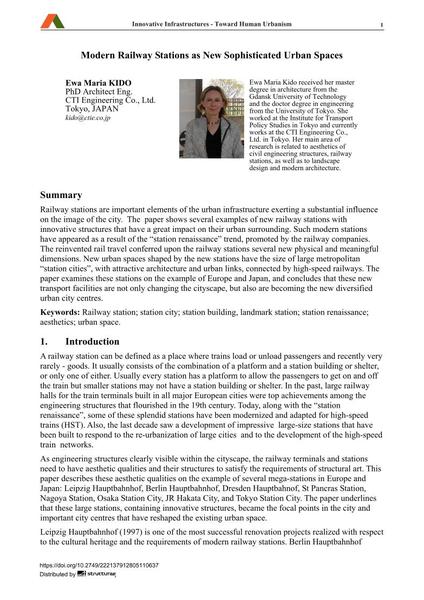Modern Railway Stations as New Sophisticated Urban Spaces

|
|
|||||||||||
Détails bibliographiques
| Auteur(s): |
Ewa Maria Kido
|
||||
|---|---|---|---|---|---|
| Médium: | papier de conférence | ||||
| Langue(s): | anglais | ||||
| Conférence: | 18th IABSE Congress: Innovative Infrastructures – Towards Human Urbanism, Seoul, Korea, 19-21 September 2012 | ||||
| Publié dans: | IABSE Congress Seoul 2012 | ||||
|
|||||
| Page(s): | 389-397 | ||||
| Nombre total de pages (du PDF): | 9 | ||||
| DOI: | 10.2749/222137912805110637 | ||||
| Abstrait: |
Railway stations are important elements of the urban infrastructure exerting a substantial influence on the image of the city. The paper shows several examples of new railway stations with innovative structures that have a great impact on their urban surrounding. Such modern stations have appeared as a result of the “station renaissance” trend, promoted by the railway companies. The reinvented rail travel conferred upon the railway stations several new physical and meaningful dimensions. New urban spaces shaped by the new stations have the size of large metropolitan “station cities”, with attractive architecture and urban links, connected by high-speed railways. The paper examines these stations on the example of Europe and Japan, and concludes that these new transport facilities are not only changing the cityscape, but also are becoming the new diversified urban city centres. |
||||
| Mots-clé: |
esthétique
|
||||
